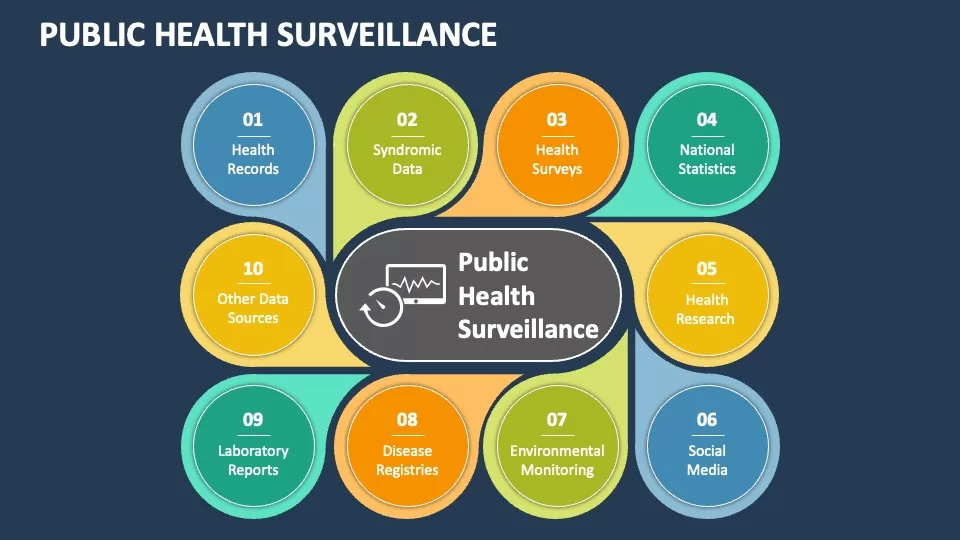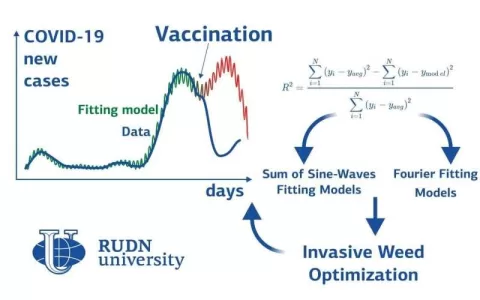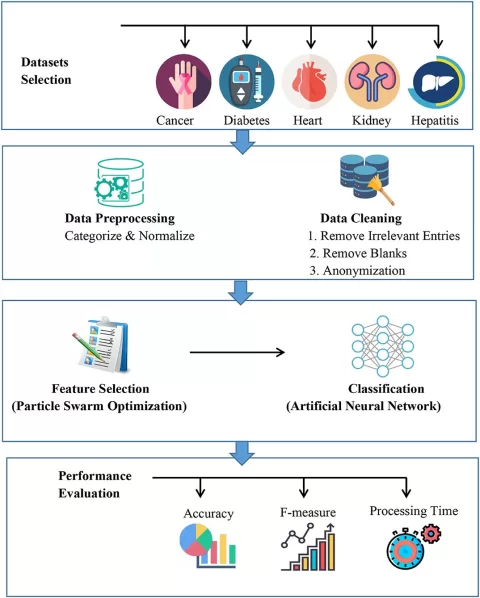Public health surveillance is a vital component of health security, especially in the wake of recent health emergencies. As nations navigate the complexities of pandemic response data and the ramifications of COVID-19, the need for comprehensive monitoring systems has never been clearer. In the Asia Pacific region, the World Health Organization (WHO) is championing multi-source surveillance, integrating insights from diverse health and non-health sectors to inform timely decisions. This approach not only enhances the efficiency of public health initiatives but also embodies a proactive strategy for managing potential outbreaks and emerging threats. By harnessing innovations like AI in public health and collaborative frameworks, stakeholders are laying a robust foundation for future health security endeavors.
In the realm of health protection, surveillance practices play a critical role in monitoring disease trends and crafting effective interventions. Within the Asia Pacific spectrum, a collaborative framework has emerged that synthesizes data from various sources to bolster health security initiatives endorsed by global entities like WHO. This innovative multi-faceted approach shines a light on the vulnerabilities that have been exposed during health crises, encouraging nations to integrate insights from both health and socio-economic sectors. Moreover, leveraging cutting-edge technologies, such as artificial intelligence and real-time data analysis, enhances the predictive capabilities and responsiveness of health systems. Such efforts not only facilitate comprehensive interventions during emergencies but also aim for a sustainable public health landscape across diverse communities.
Understanding Multi-Source Surveillance in Public Health
Multi-source surveillance plays a crucial role in public health by integrating data from diverse origins to create a comprehensive understanding of health threats. In the context of the COVID-19 pandemic, it became increasingly evident that no single surveillance system could suffice, as health crises require intelligence that encompasses various sectors including human behavior, environmental factors, and economic data. By employing a multi-source approach, health authorities can draw insights not only from traditional health metrics but also from social media trends and mobility patterns. This holistic perspective is vital in pinpointing outbreaks early and prompting timely interventions.
The World Health Organization (WHO) recognizes that effective public health surveillance must engage multiple stakeholders from various sectors. The Asia Pacific Health Security Action Framework (APHSAF) advocates for this multi-source surveillance model, encouraging countries in the region to collaborate more closely than ever. Countries are now able to share and analyze data collectively, enhancing their ability to respond to health emergencies. By combining resources, these nations can significantly improve their public health capacity, ensuring rapid and coordinated action, which is particularly crucial in managing resources during potential pandemics.
The Impact of Artificial Intelligence on Public Health Surveillance
The integration of Artificial Intelligence (AI) into public health surveillance systems has transformed the landscape of disease detection and response. For instance, in India, the Integrated Health Information Platform (IHIP) harnesses AI to scan media and surveillance data in real-time, providing timely alerts for emerging health crises. This real-time data mining allows health officials to react swiftly and efficiently, thus enhancing the country’s pandemic response capabilities. The utilization of such technology marks a significant evolution in how public health data is collected and analyzed, ultimately leading to more informed decision-making.
Moreover, AI’s advancements are facilitating the development of predictive analytics in public health. As noted by experts at the APHSAF discussions, knowledge gained from AI applications in surveillance can be applied to various infectious diseases, thus improving forecasting and preventive measures. The ongoing efforts to refine these technologies promise to revolutionize public health strategies, allowing for a more agile response to health emergencies across the Asia Pacific region. As countries continue to share innovations, AI will play an increasingly vital role in enhancing public health surveillance effectiveness.
AI’s applicability in forecasting significant health events creates an exciting forefront for public health. For example, AI-driven data analytics allow health officials to identify potential outbreaks even before they occur, monitoring changes in population behavior and environmental factors. This predictive ability can lead to preemptive measures, reducing the incidence of diseases and easing the burden on health systems. As nations adopt these sophisticated technologies, they not only prepare for immediate crises but also strengthen their overall health security for the long term.
Advancing Health Security through WHO Initiatives
The World Health Organization (WHO) has been pivotal in advancing health security in the Asia Pacific region through various initiatives aimed at improving public health surveillance. Since the endorsement of the Asia Pacific Health Security Action Framework (APHSAF), WHO has championed a multi-sectoral approach that encourages collaboration among countries and different health sectors. These initiatives are vital for building robust surveillance systems capable of addressing health emergencies as they arise, ensuring that critical information is accessible to decision-makers swiftly. The WHO’s emphasis on multi-source surveillance under APHSAF allows countries to tap into a wealth of data, fostering effective preparation for potential outbreaks.
In implementing these initiatives, WHO seeks to strengthen countries’ health systems by building capacities and sharing best practices. By focusing on multi-source data integration, WHO aims to create a sustainable model for public health surveillance that can withstand future challenges. These efforts are particularly relevant in the face of global health threats, where real-time data sharing and collaboration can be the difference between swift action and catastrophic outcomes. WHO’s commitment to advancing health security through innovative frameworks exemplifies the importance of proactive surveillance in safeguarding public health.
Collaborative Efforts for Pandemic Preparedness
Collaboration among countries has become essential for effective pandemic preparedness, especially in the Asia Pacific region, where health threats can easily transcend borders. During recent APHSAF Stakeholders Meetings, participants shared successful strategies and experiences that have enhanced their surveillance operations. Countries like Indonesia highlighted their use of collaborative workshops to tackle specific public health challenges, such as rising dengue cases, demonstrating the benefits of pooled resources and knowledge-sharing. Such cooperative efforts strengthen not only the participating nations’ health capabilities but also the collective resilience of the region against future pandemics.
The shared experiences and insights gained from these collaborative initiatives exemplify the value of a unified response to health emergencies. By fostering partnerships among governmental, health, and research entities, nations can enhance their data collection and analysis capabilities. Ultimately, this collaboration builds a more integrated health surveillance system that is adaptable and responsive to the dynamic nature of global health challenges. As the threat of pandemics continues to loom, these multi-sectoral collaborations are more vital than ever.
Strengthening Surveillance Systems through Educational Initiatives
Building a competent health workforce is critical for effective public health surveillance. The WHO, along with various educational institutions, is dedicated to providing training and resources that enhance local capacities. By focusing on specialized educational initiatives, health professionals are equipped with the necessary skills to navigate the complexities of multi-source surveillance systems. Furthermore, these educational programs often include simulations and real-world case studies that prepare health workers for emergencies, ensuring they are ready to implement effective public health measures when threats arise.
In addition to training current professionals, there is also a growing emphasis on fostering the next generation of public health leaders. By creating academic partnerships, WHO is facilitating knowledge transfer and the development of robust surveillance methodologies among students and early-career professionals. This focus on education not only strengthens individual capabilities but also instills a culture of preparedness and innovation within public health systems, thus ensuring that communities are better equipped to handle public health crises in the future.
Utilizing Data Analytics for Effective Decision-Making
Data analytics has become a cornerstone of effective decision-making in public health surveillance systems. With the sheer volume of information available today, the challenge lies in transforming this data into actionable insights. Through sophisticated analytical tools, health organizations can identify trends and potential outbreaks, allowing for timely interventions. The integration of data analytics into public health practices is pivotal, especially in response to emerging health threats that require swift and coordinated actions.
Moreover, the application of data analytics can also promote transparency and accountability in public health responses. By making surveillance data readily available, stakeholders can track health trends and the effectiveness of interventions in real time. This level of transparency not only fosters trust among the public but also empowers health officials to adjust strategies based on data-driven evidence. As nations work towards improving their health security framework, the emphasis on robust data analytics will play an essential role in shaping effective public health policies.
Regional Collaborations for Enhanced Health Security
The establishment of regional collaborations among Asia Pacific nations is vital for enhancing health security. By sharing resources, experiences, and strategies, countries can bolster their surveillance systems and improve readiness for potential health emergencies. Initiatives like the APHSAF exemplify how targeted cooperation can yield shared benefits, enabling nations to adopt best practices and learn from one another’s successes and challenges. Such partnerships not only foster a collaborative spirit but also create a unified front against emerging health threats.
These regional collaborations are particularly important for implementing multi-source surveillance strategies, which require a high degree of coordination and information sharing. Countries cooperating on health surveillance can access a broader range of indicators, facilitating comprehensive decision-making during crises. As public health threats evolve and become increasingly complex, the collective strength of regional partnerships will be essential in ensuring a proactive and effective public health response across the Asia Pacific.
Innovative Technologies in Disease Detection
The introduction of innovative technologies in disease detection has revolutionized how public health officials respond to emerging health threats. Tools such as genomic sequencing and AI-driven analytics provide unprecedented insights into the transmission dynamics of infectious diseases. For example, the implementation of advanced genomic sequencers can yield rapid results, enabling health authorities to understand the genetic makeup of pathogens swiftly. This level of analysis is crucial in informing effective public health policies and vaccine development during outbreaks.
Furthermore, these innovative technologies also facilitate real-time surveillance capabilities, allowing for quicker responses to health emergencies. As countries harness advancements in technology, they enhance their ability to monitor health trends and intervene when necessary. The collaboration between health institutions and technology companies is vital in this regard, as it opens avenues for continuous improvement and adaptation of surveillance methodologies. As we move forward, the integration of technology in public health surveillance will only become more significant in building resilience against future health threats.
Challenges Facing Public Health Surveillance in the Asia Pacific
Despite the advancements in public health surveillance practices, significant challenges persist in the Asia Pacific region. Limited resources, regional disparities in health capacity, and differing levels of technological integration can hinder effective surveillance systems. Countries may struggle with varying degrees of health information system infrastructures, impacting their ability to gather and analyze data efficiently. Addressing these disparities is essential for establishing a robust health surveillance framework capable of dealing with complex health emergencies.
Additionally, maintaining public trust and ensuring timely data-sharing across borders can present challenges for health authorities. Health data privacy concerns may lead to reluctance in sharing information, which is critical during health emergencies. Stakeholders must navigate these complexities, establishing clear protocols that ensure both privacy and proactive health communication. As countries work towards enhancing their public health surveillance capabilities, addressing these challenges will be vital for ensuring a cohesive and effective response to future health threats.
Frequently Asked Questions
What is public health surveillance and why is it important?
Public health surveillance involves the systematic collection, analysis, and interpretation of health data to monitor and improve community health. It plays a critical role in informing public health decisions, particularly during emergencies like the COVID-19 pandemic, as it provides timely insights into disease trends and outbreaks.
How is multi-source surveillance enhancing public health efforts in the Asia Pacific region?
Multi-source surveillance in the Asia Pacific improves public health by integrating data from various sources such as human, animal, and environmental health. This comprehensive approach helps decision-makers access vital information needed to implement effective public health measures, especially during health emergencies.
What role does the WHO play in advancing public health surveillance initiatives?
The World Health Organization (WHO) promotes public health surveillance through initiatives like the Asia Pacific Health Security Action Framework (APHSAF). This framework encourages member states to adopt innovative surveillance methods and collaborate across sectors to strengthen health systems and enhance pandemic responses.
How is artificial intelligence (AI) transforming public health surveillance?
AI is transforming public health surveillance by enhancing data analysis capabilities and event detection. In India, the Integrated Health Information Platform (IHIP) uses AI to process information from over 90,000 sources in real-time, enabling quicker responses to potential health threats.
What innovations in public health surveillance were discussed at the recent APHSAF Stakeholders Meeting?
At the APHSAF Stakeholders Meeting, innovations such as genomic sequencing tools and AI-driven platforms were highlighted as key advancements. These technologies enable rapid disease detection and enhance preparedness, offering countries cost-effective, efficient solutions for public health challenges.
In what ways can multi-source surveillance mitigate the impact of future pandemics?
Multi-source surveillance can mitigate pandemic impacts by providing comprehensive, real-time data from diverse sectors. This holistic view enables public health authorities to make informed decisions quickly, ensuring better resource allocation, timely interventions, and ultimately reducing the spread of infectious diseases.
What capacity-building efforts are being made to improve public health surveillance in the Asia Pacific?
Efforts to improve public health surveillance capacity in the Asia Pacific include partnerships between WHO and various educational and health institutions to develop skills in genomic surveillance, data analytics, and other critical areas. These collaborations aim to strengthen national and regional capacities to respond effectively to health emergencies.
What are the benefits of integrating health and non-health data in public health surveillance?
Integrating health and non-health data in public health surveillance enhances decision-making by providing a more comprehensive understanding of health trends. This approach allows for better resource allocation, a clearer picture of disease prevalence, and improved responses to health threats, ultimately leading to stronger public health outcomes.
| Key Points |
|---|
| Public Health Surveillance is critical for timely decision-making during health emergencies, evidenced by the COVID-19 pandemic. |
| The World Health Organization (WHO) has endorsed the Asia Pacific Health Security Action Framework (APHSAF) focusing on multi-source surveillance. |
| Innovative tools such as genomic sequencers and AI platforms enhance rapid response capabilities in countries like Indonesia and India. |
| Collaboration across sectors (human, animal, environmental health) is essential for a comprehensive surveillance approach. |
| Efforts are underway to expand workforce capacities and improve data analytics for better tracking of health outcomes. |
Summary
Public health surveillance is a fundamental component in ensuring effective responses to health emergencies. The ongoing initiatives by the World Health Organization and regional partners in Asia and the Pacific highlight the evolution and advancements of surveillance systems, particularly through innovative technologies and collaborative approaches. As countries continue to learn from past health crises, the focus on integrating diverse data sources will enhance capacity to respond to future challenges.
The content provided on this blog (e.g., symptom descriptions, health tips, or general advice) is for informational purposes only and is not a substitute for professional medical advice, diagnosis, or treatment. Always seek the guidance of your physician or other qualified healthcare provider with any questions you may have regarding a medical condition. Never disregard professional medical advice or delay seeking it because of something you have read on this website. If you believe you may have a medical emergency, call your doctor or emergency services immediately. Reliance on any information provided by this blog is solely at your own risk.








